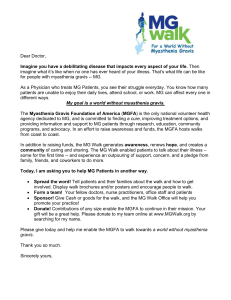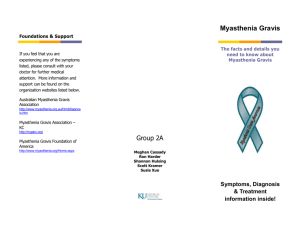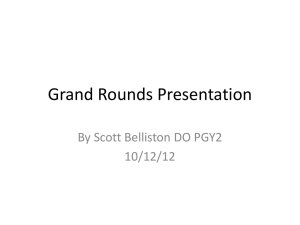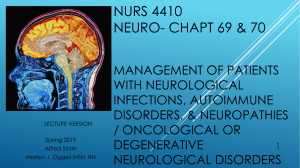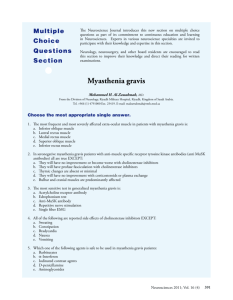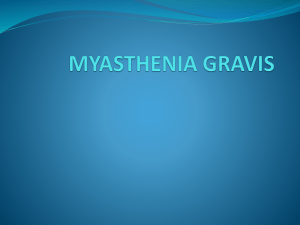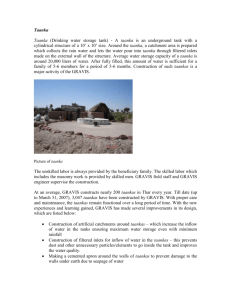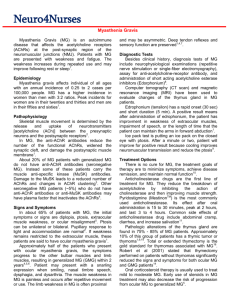Learning Guide: Neuromuscular Disorders Compare and contrast
advertisement
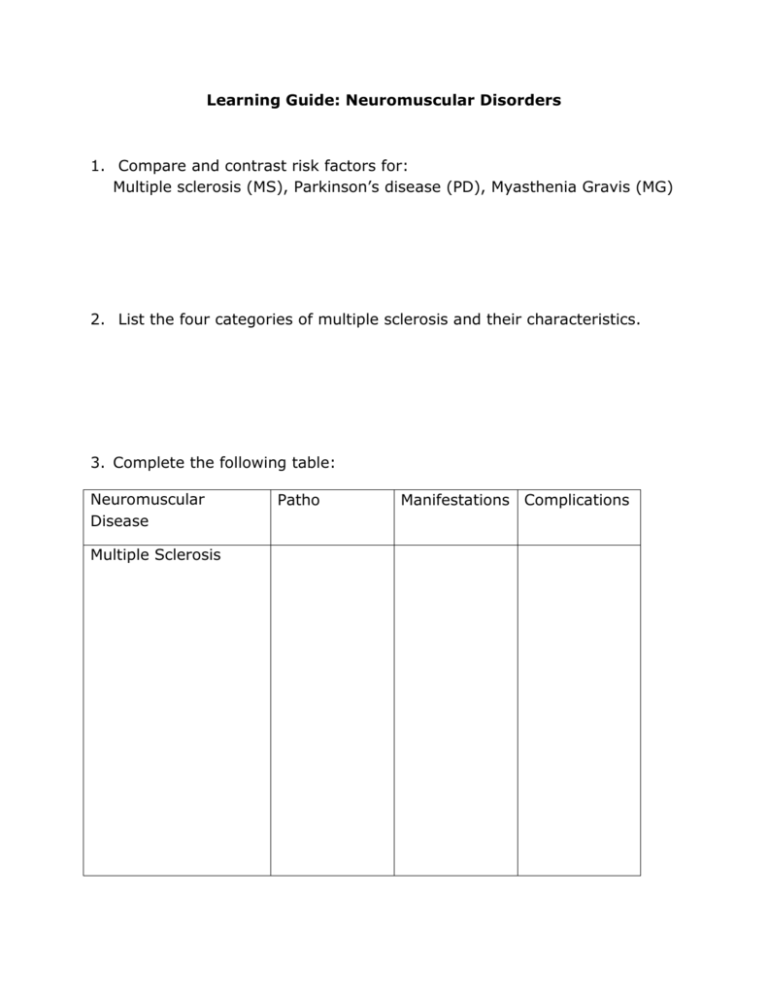
Learning Guide: Neuromuscular Disorders 1. Compare and contrast risk factors for: Multiple sclerosis (MS), Parkinson’s disease (PD), Myasthenia Gravis (MG) 2. List the four categories of multiple sclerosis and their characteristics. 3. Complete the following table: Neuromuscular Disease Multiple Sclerosis Patho Manifestations Complications Parkinson’s Disease Myasthenia Gravis 4. Match the following diagnostic test to the correct neuromuscular disorders: _____________IgG may be found in the CSF ______________EMG and Tensilon test ______________MRI may confirm diagnosis ______________No diagnostic test A. PD B. MG C. MS 5. Briefly describe the types of surgical interventions that may be used to treat the following disorders and how they may control manifestations and/or improve function for the client: Parkinson’s Disease Myasthenia gravis 6. Complete the table for medications used in treatment of the following: Disorder Multiple Sclerosis Med. Class. Action Med. Ex. Teaching Parkinson’s Disease Myasthenia Gravis 7. Why can’t oral dopamine be given as replacement therapy for the Parkinson client? What medication is given instead? 8. Explain why Levadopa is often given in combination with carbidopa for management of Parkinsons. 9. List 5 nursing interventions to decrease the number and severity of side effects of antiparkinson’s medication. 10. Compare and contrast a myasthenic crisis with a cholinergic crisis. 11. What is the diagnostic test performed to differentiate between the two crises? Give the meaning of a positive test and a negative test. 12. A MS client has the following nursing diagnosis: Impaired physical mobility RT muscle weakness and muscle spasticity AEB client statements “my legs feel like jello when I stand for more than 10-15 min.” and “It is difficult to walk because my leg muscles feel like they are cramping”. Hyperreflexia noted in both legs. State the client goals and appropriate nursing interventions for this diagnosis. 13. Your client with PD has lost 5 lbs. in the past month. He states it is just too difficult to chew and swallow his food. Give the appropriate nursing diagnosis, goal and interventions for this problem. 14. Fatigue is a common problem for chronic neurological problems. List nursing interventions for the management of chronic fatigue for MS, PD, and MG. 15. List 5 psychosocial nursing diagnoses for a client with a neuromuscular disorder. 16. Match the following Nursing Diagnoses with the appropriate neuromuscular diseases. Some diseases may be used more than once: Impaired Swallowing Ineffective Airway Clearance A. Parkinson’s Disease B. Multiple Sclerosis Impaired Verbal Communication Ineffective Breathing Pattern Sexual Dysfunction Disturbed Body Image Activity Intolerance C. Myasthenia Gravis
